Building A Free DIY Goat Playground – Step by Step
If you are looking for a DIY goat playground that is easy to make using mostly supplies you may have on hand, then this guide is just what you need.
How to raise dairy goats that are active and healthy playing and climbing as they love to do. Add a playground to your pasture and watch your goats have fun getting exercise at the same time.
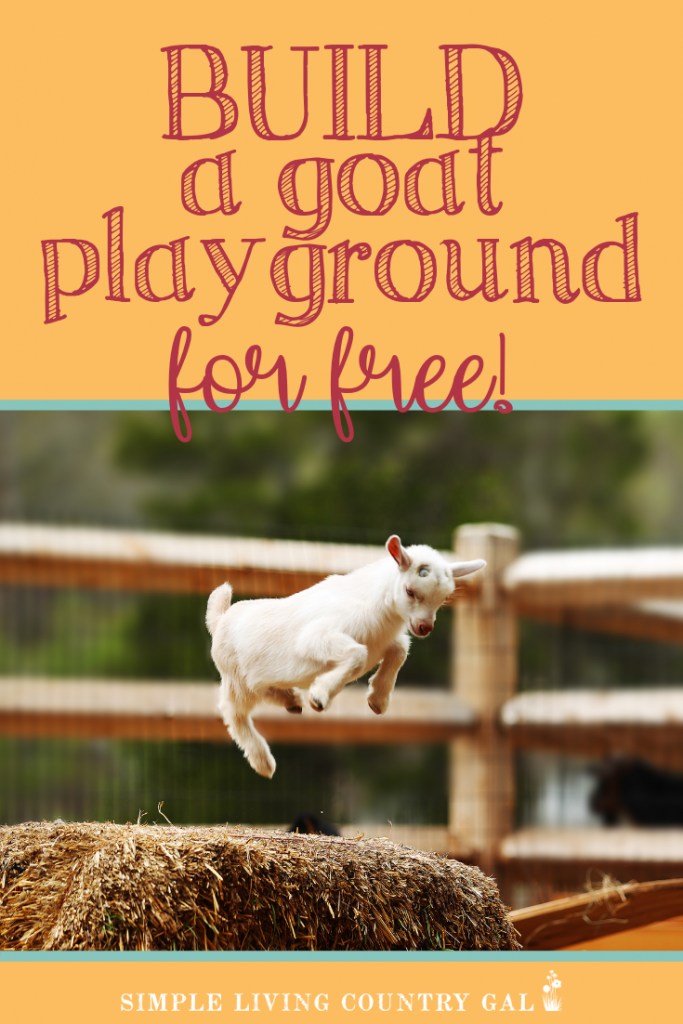
If you have goats, you know one thing for certain: They love to climb! A wood pile, a hill, a tractor, or even a concrete block will do the trick.
I have this old plastic exercise step in my barn that I put in for the goats a few years ago. My gals still fight over who will get to stand on that thing. Being higher than anyone else, even if it’s just a few inches, seems to be a goal for any goat.
One day, I realized my goats needed a bigger area to climb around—a DIY goat playground where they could all climb. From our oldest does to our younger goat kids. Just like human kids, goat kids are full of energy. Giving them an outlet like a playground will help keep them active without resorting to annoying other goats in the herd out of boredom.
I turned to the internet looking for options and found many wonderful ideas. Unfortunately most looked pretty elaborate and expensive, but I am cheap (to a fault) and needed something that would work without a hefty price tag.
We have a small mound in our pasture from dirt that was dumped years ago but never got around to moving it. It has since been covered with grass and weeds. Every single one of my goats will climb up on their “mini-mountain” to survey all that there is below them. Which isn’t much, let me tell you. 🙂 It is quite comical to see my herd clustered on that hill looking around as if they are hundreds of feet up!
I told my Hubby that I wanted to make something for them to climb and play on. Something cheap and easy to make. The perfect combination for any homesteading DIY goat playground. It had to withstand the play of a small goat kid all the way put to a full-grown Nubian goat that can weigh over 100 pounds. That was when we thought about electric spools.
Check out these easy Goat Playground Ideas!
I contacted a friend who worked for our local power company, and he was able to get me four electrical spools that were left over from a previous project. Electrical spools are wooden cylinders used for holding wiring. They are very sturdy and come in two sizes (that I know of).
In our area, they are quite easy to get and are free just for that asking. Your area may have different rules so you will need to check first. The hardest part is getting them to your home as they are a bit awkward to move around.
SLCG Pro Tip: Call your local contractor and ask to see if they have spools they want to get rid of. You can also call your local extension office or your electric company. They are often thrilled to get rid of the spools and may even deliver them to you.
When we got the spools, I was quite surprised to see just how durable they were. The construction was solid, and over the years, they have been able to withstand the constant abuse from our rowdy goats.
They also hold up rather well in our unrelenting winters. On our little farm, we have them inside our barn because our goats like to sleep on them, especially in the winter if the ground is cold.
They are not only sturdy and heavy-duty but surprisingly easy to move- even for me. Just tip one onto its side, and you can roll it to wherever you need it to be.
How To Make A Free DIY Goat Playground
We have used spools throughout our homestead for years, but this was the first time I would use them in a DIY project. My idea was to set up three spools using them as a platform with two boards to act as a bridge connecting them all together. My goal was to spend little to no money by using what supplies we had on hand from other projects.
Step #1 Gather your supplies
For this setup, you will need three spools, a few planks of wood, and hardware such as screws or nails.
Before you construct your playground, reinforce your spools so they are sturdy. You may also want to close up any openings on the ends. Please be aware that most spools do have holes on either end that are just large enough for a goat’s hoof to get caught in. This is easily fixed, however, by screwing on a scrap piece of wood one just large enough to cover the holes.
While you are at it, look for any hardware that may be sticking out of the spools that can cause injury to you or your goats. Screws, nails, or staples can either be pounded in or removed altogether. Finally, check the rest of the spool and fix any loose boards or rotted areas.
Step #2 Pick the perfect spot
Once you have the holes covered and any nails or screws removed, you are ready to put your spools in place. Position the spools a short distance apart in a flat area. If you live in a hot area, you may want to choose a spot shaded by the heat.
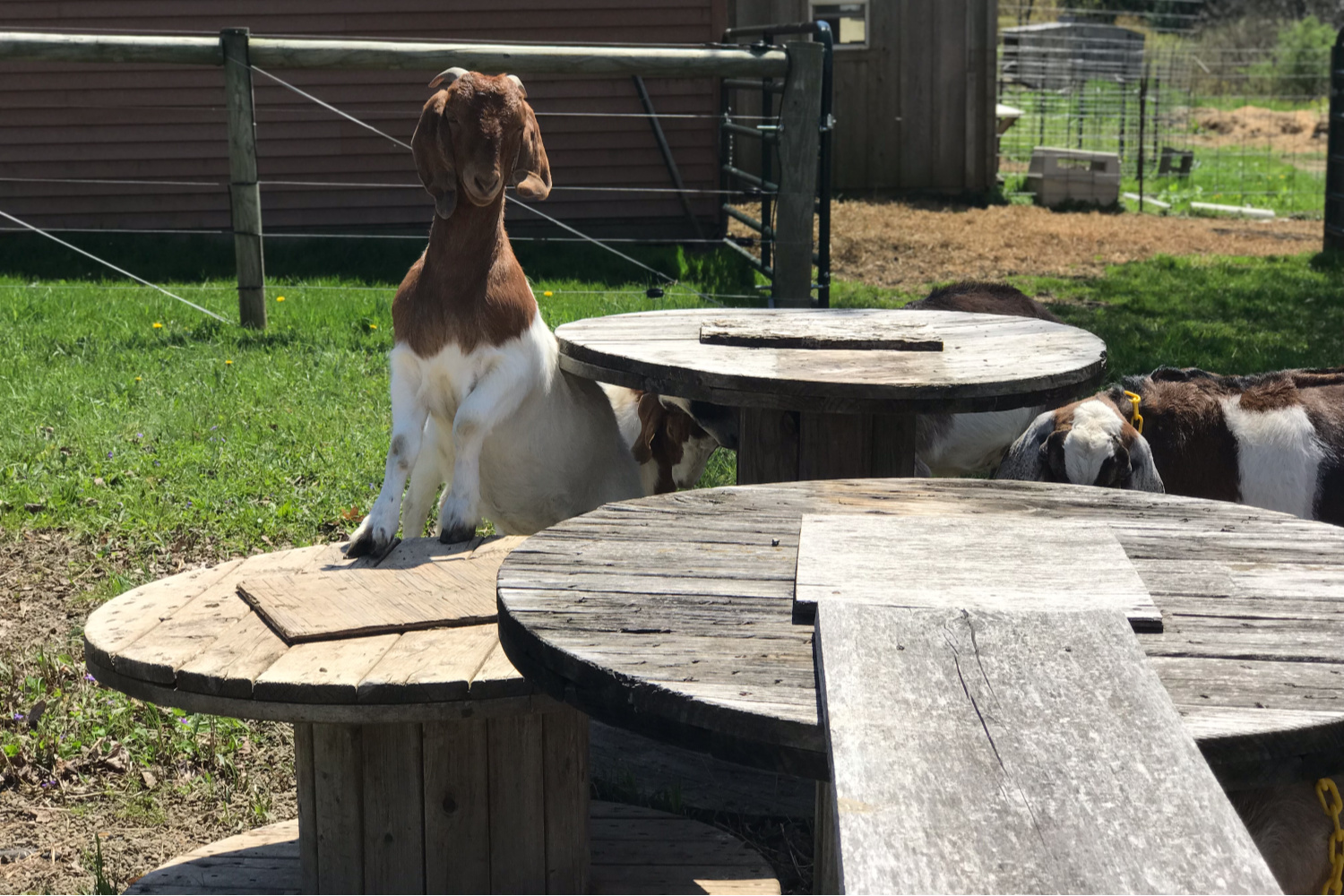
Step #3 Arrange your setup
For our first setup, we placed the larger spools in a half circle, and the smaller spool I put in the middle of the playground. The smaller spool was low enough that our younger kids were able to use it for climbing up on the main area.
Goat kids are super curious but timid as well. Our kids would play on the lower level until they felt confident enough to jump up to the top. Once there, they would run and head-butt each other, trying to knock everyone off. Because the height is minimal, the kids can jump down without much risk of injury.
Step #4 Connect them all together
To ensure your setup is safe, you will need to secure the wooden planks in place. You can arrange the spools, and your goats will still find it a fun place to play, however, the bridge we made using planks of wood took our setup to the next level.
How to Make the Bridges
- In our wood pile, we found a piece of leftover hemlock and cut it into two 6-foot pieces.
- I positioned each one of them so there was about a foot on each spool.
- Holding it in place, I was able to screw it into the spool with my other hand.
- This was enough to keep the entire setup secure and solid.
On a fun note, I was happy to finally display my construction skills. For some reason, Hubby tends to hide all power tools from me.
If you choose to add the plank bridge pieces it is important to know that doing so will make it impossible to relocate your playground easily. If there is a chance you may want to move it, use screws to connect the planks. This will allow you to remove them more easily if needed.
The hardest part of the whole project was getting my does to try the playground out. Heaven forbid I ask them to do anything that requires effort—the divas.
I finally jumped on the playground myself and lured them up with fresh maple leaves (which they just LOVE). Maybe that was their intention all the time? To get ME up on that contraption walking and parading to my neighbor’s delight.
The young ones explored it the most, but eventually, my older does were up having a grand old time.
I know quite a few people will purchase play sets to use at yard sales, and this is a great idea, especially if you have goat kids or smaller goats such as minis or dwarfs. I, however, was looking for a more rustic look that would withstand a herd of our size. I wanted my playground to blend in and not stand out so much. And FREE has always been my goal with any goat toy.
READ: HOW TO MAKE A DIY GOAT SCRATCHER
Since we raise large breed goats, Alpine, Boer, and Nubian, a plastic play set would never hold up. For us, wood was the best option to try.
One of the best things about being a homesteader is learning to think outside the box. More often than not, what I am looking for can easily be made with what I already have on hand. Just a little imagination can create a playground for your herd that they will use and love!
Update on our DIY goat playground
Since I posted this article, many goats have played on these spools. All in all, they have held up pretty well for the last handful of years. We have since moved them to our gravel pit in the pasture and added a set of DIY stairs.
The little goat kids LOVE this DIY goat playground and the mothers are happy to get a break from nursing.
Having a playground is not essential but it is amazingly helpful when training young goats to behave better. The playground helps them learn how to socialize with not only the other kids but with the other moms as well.
It also helps them to learn agility, work off some excess energy, and even introduce them to water and feed more quickly. As they play they get thirsty and if mom is not ready to nurse they are forced to find other ways to drink. For that reason, I like to have a bucket of fresh water close by.
The quicker they learn to like water, the easier it is to ween them when the time comes.
We have since added a smaller area for our young kids. This allows them to have an area all their own without risking injury from the older goats, who tend to favor the larger spooled area. It consists of a bench and an old tire we half buried in the ground to hold it vertically.
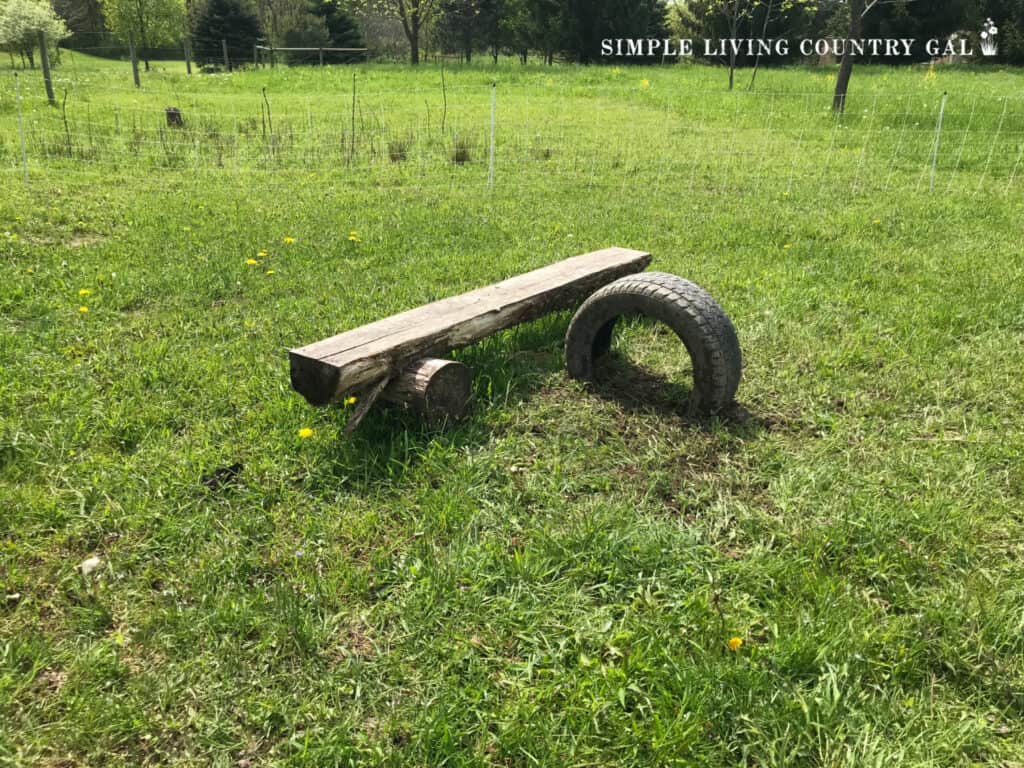
And of course, I could NOT get a picture of the babies here since the mamas wanted to be in the shot. Funny how goats are a lot like toddlers.
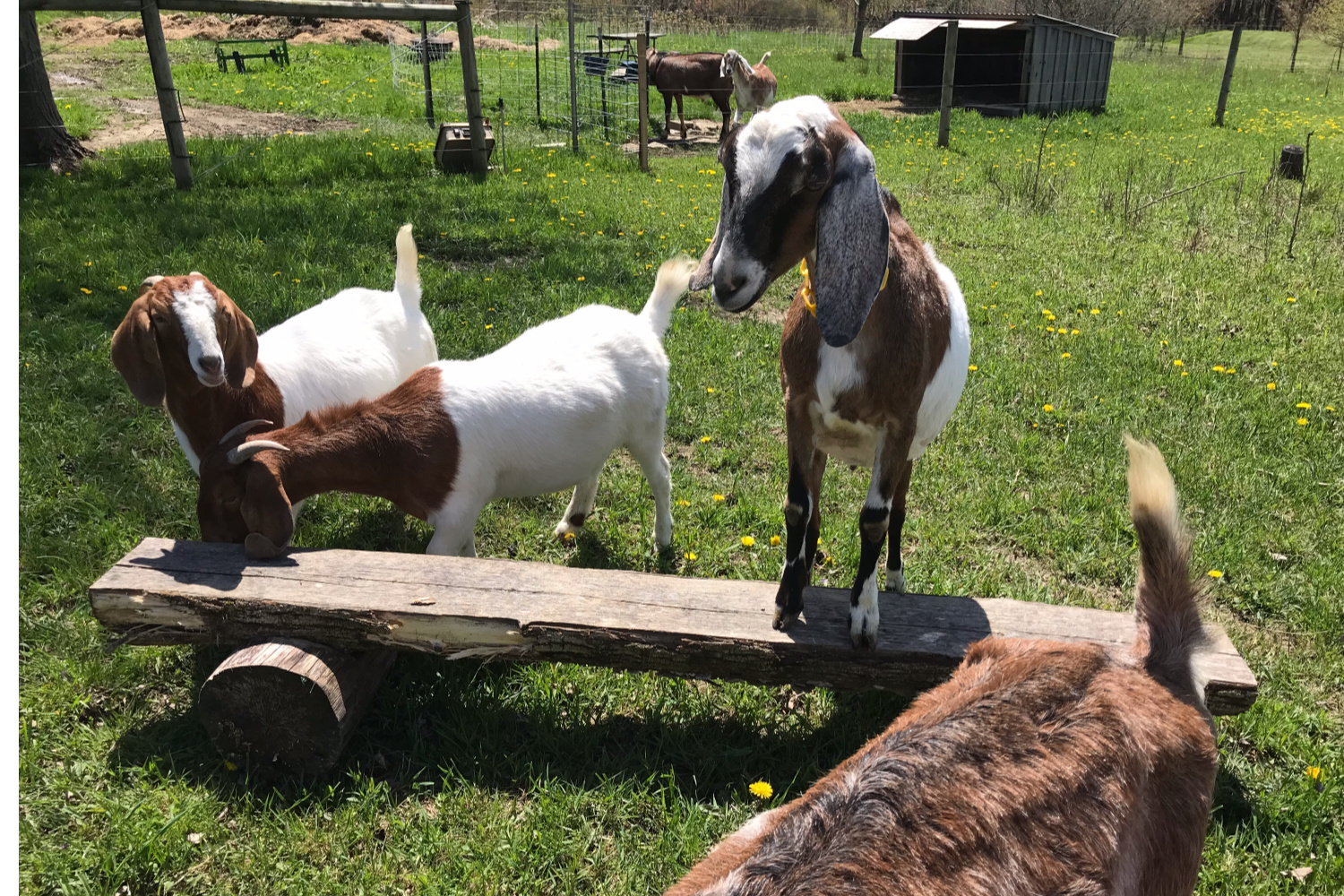
Projects like this DIY goat playground are just all a part of being a homesteader so it is only natural that a free obstacle course just for goats will be at the top of our list.
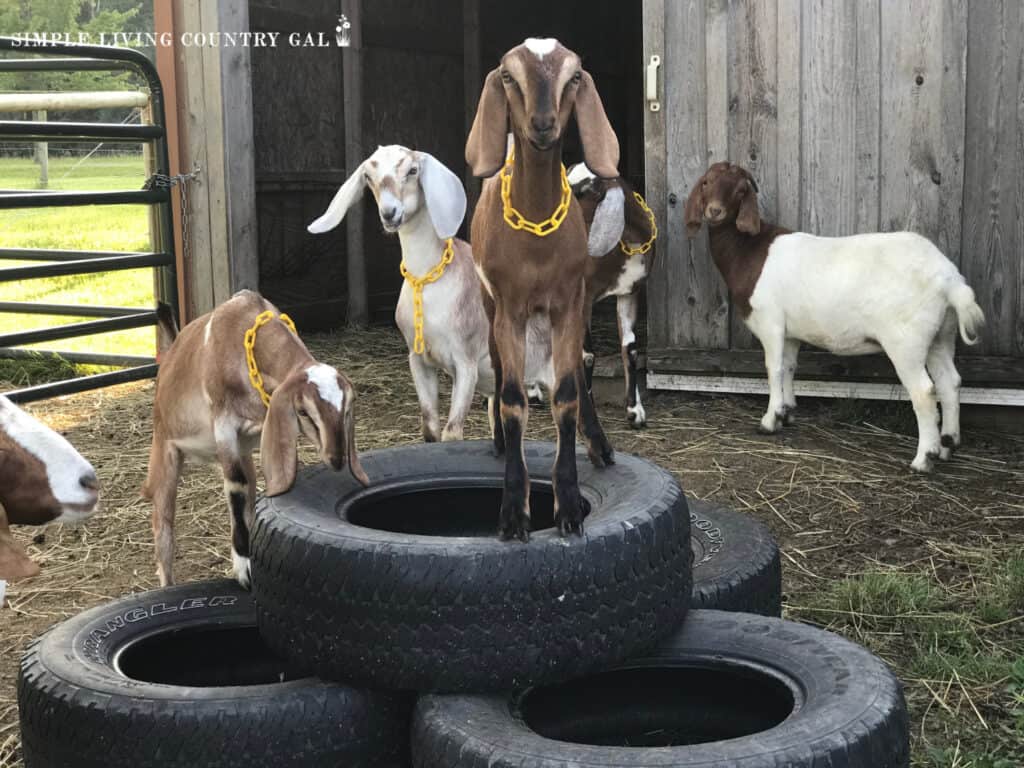
Put your DIY skills to work and you will be amazed at what you can make out of nothing providing something for your animals to enjoy.

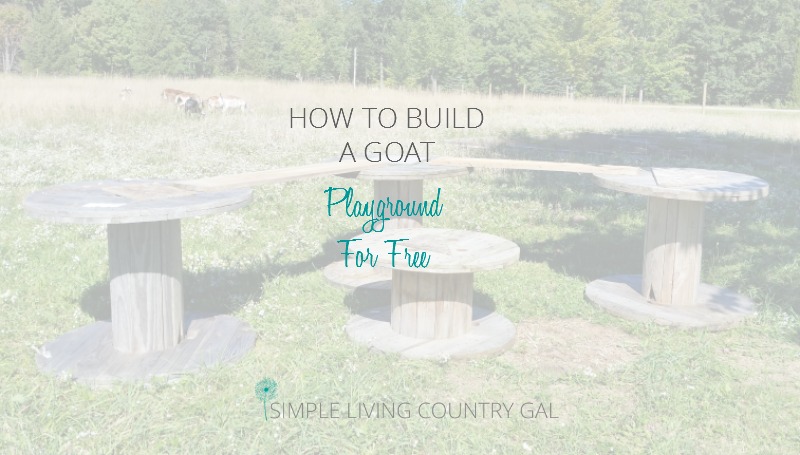
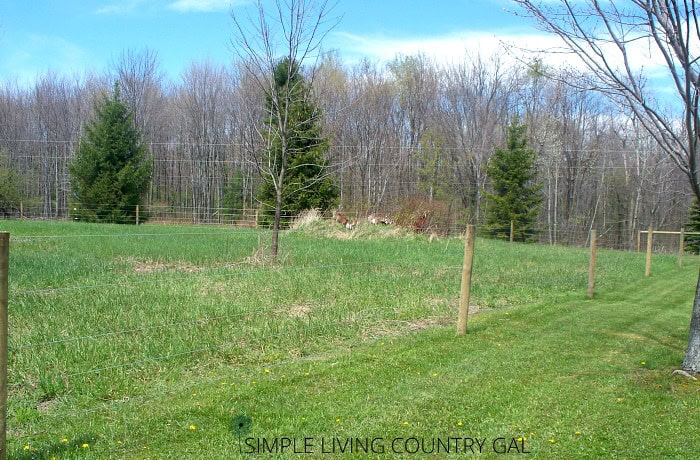
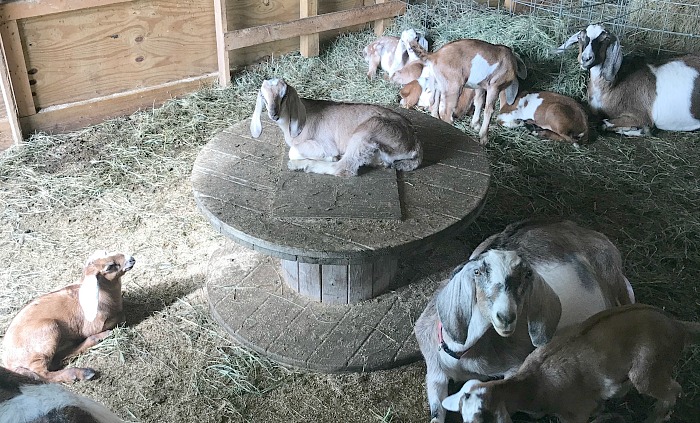
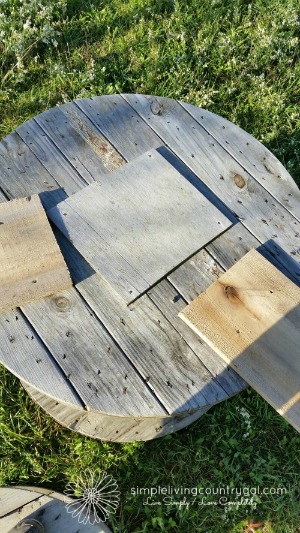
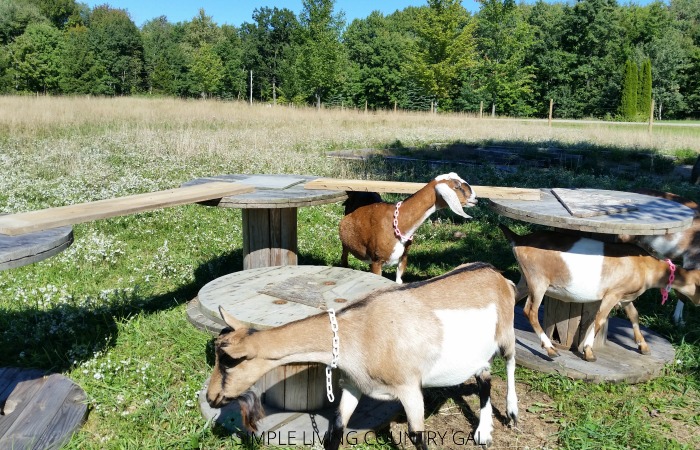
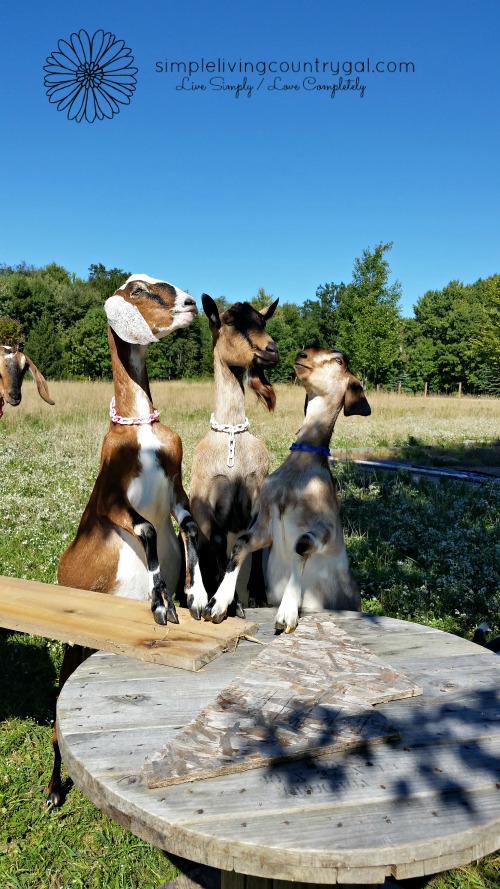
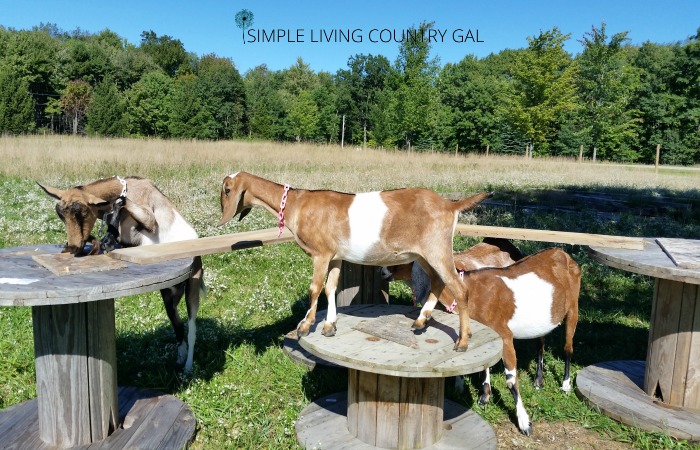
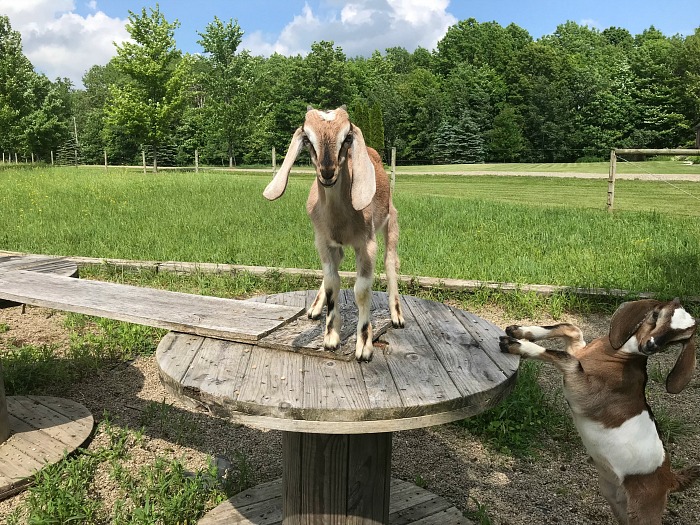
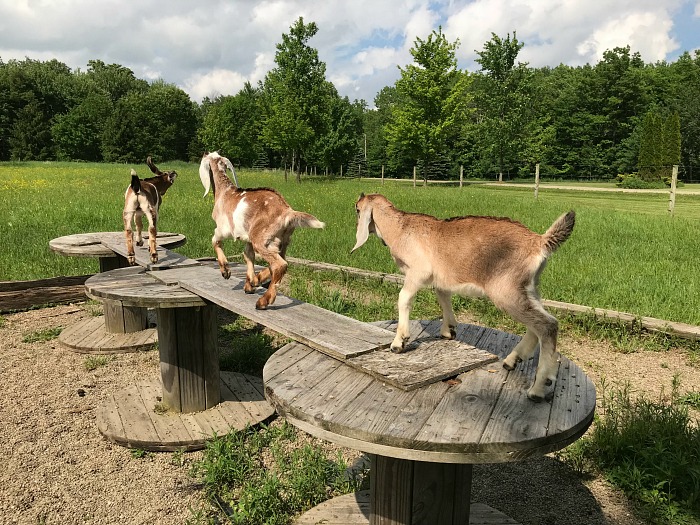
This sounds like a lot of fun for your goats. I’ll have to keep my eyes open for some empty spools. Thank you for sharing at the Our Simple Homestead blog hop.
So glad to see I’m not the only crazy goat mama! I picked up 4 spools from my electric co-op over the winter after I got my goats and they love them! We used leftover plywood and an unused dog ramp with textured floor too.
How do you keep your goats fenced? I’ve been hesitant to get goats because of the propensity to escape. I’m older and can’t chase as I could’ve a few years ago!! Thank you for your input and article. Hope to hear from you soon, Star &Billy Graham
Hi Star!
I have several different ways I keep my goats fenced in. I have cattle panels (5 foot high) for my permanent small areas off the barn. I then have electric netting for my bucks grazing area and high tinsel fencing for my main pasture where my does are. The easiest to move is the electric netting which is great for rotational grazing. I have only had 1 escape and if you have a bucket of feed and your goats are trained they come right to you. 🙂 I am doing a new post on fencing next week, so check back or you can sign up for my email so you don’t miss it.
Glad you stopped by!
Tracy Lynn
I am working on a “hobby” farm and I grew up with goats, so I’m interested with whatever I can learn. Thank you
So glad you are here, Marie!
What about toys for horses, chickens, rabbits, or guineas(because they aren’t like chickens).
My lion head doe has a litter box, food, and water on our screened porch. She loves my coffee table. She runs and jumps, hops, and thumps, dives under the furniture. It’s a hoot to watch. She terrorizes my Yorkie, and poodle .
Love goats and like to know more about them.
i want to know the sizes of the scrap wood. if the wood is too thin in thickness it could break under the goat weight. if it is too thin in width the goat could fall off of it or be forced to preform a balancing act. please give more information for the wood. another fact, if the wool is splitting or not sanded down well enough your goat might get splinters of all sizes everywhere(including the mouth). there might be different types of wood that is dangerous for goats as well.
it would be nice if you tell me the measurements of your scrap wood boards, i want my goat to be safe.
thank you.
The boards we used are 1 inch thick and have held our heavy Nubians for years. Remember, goats can climb trees and will try to stand on branches and limbs, so they are pretty nimble. With that being said, we inspect all of our toys, outbuildings, and other structures thoroughly throughout the year to catch issues before they cause a problem. This will also catch any rot, cracks, or other issues. We have had to replace boards as we see it is needed.
As far as splinters, goats get injured more often from hay than any other surface so please don’t worry! Splinters in feet are pretty much nonexistent since their hooves are there to protect them. Just like with any buildings you will want to inspect your goats routinely too, again, catch any injuries or other issues asap.
Finally, use your best judgment. This is a setup that has worked for us for years and that is why I like to share it with others. If the board does not feel safe to you, then do not use it.
All the best!
Tracy Lynn
WOW, will have to share this with our Son and DIL as they will be able to make use of this information.
I visited you via Homestead Blog Hop 443
If you are not already part of SSPS, this is a personal invite to hop over and come and share your posts with us at Senior Salon Pit Stop, every Monday to Saturday.
See my entries: 9+10 and then navigate to the bottom of my page for the Senior Salon Pit Stop linkup, we hope to meet you there virtually
Great idea!!!
What do you use for collars?
I use break-away collars for all of my goats. You can find them on Amazon, just search “break away collar goats plastic chain”